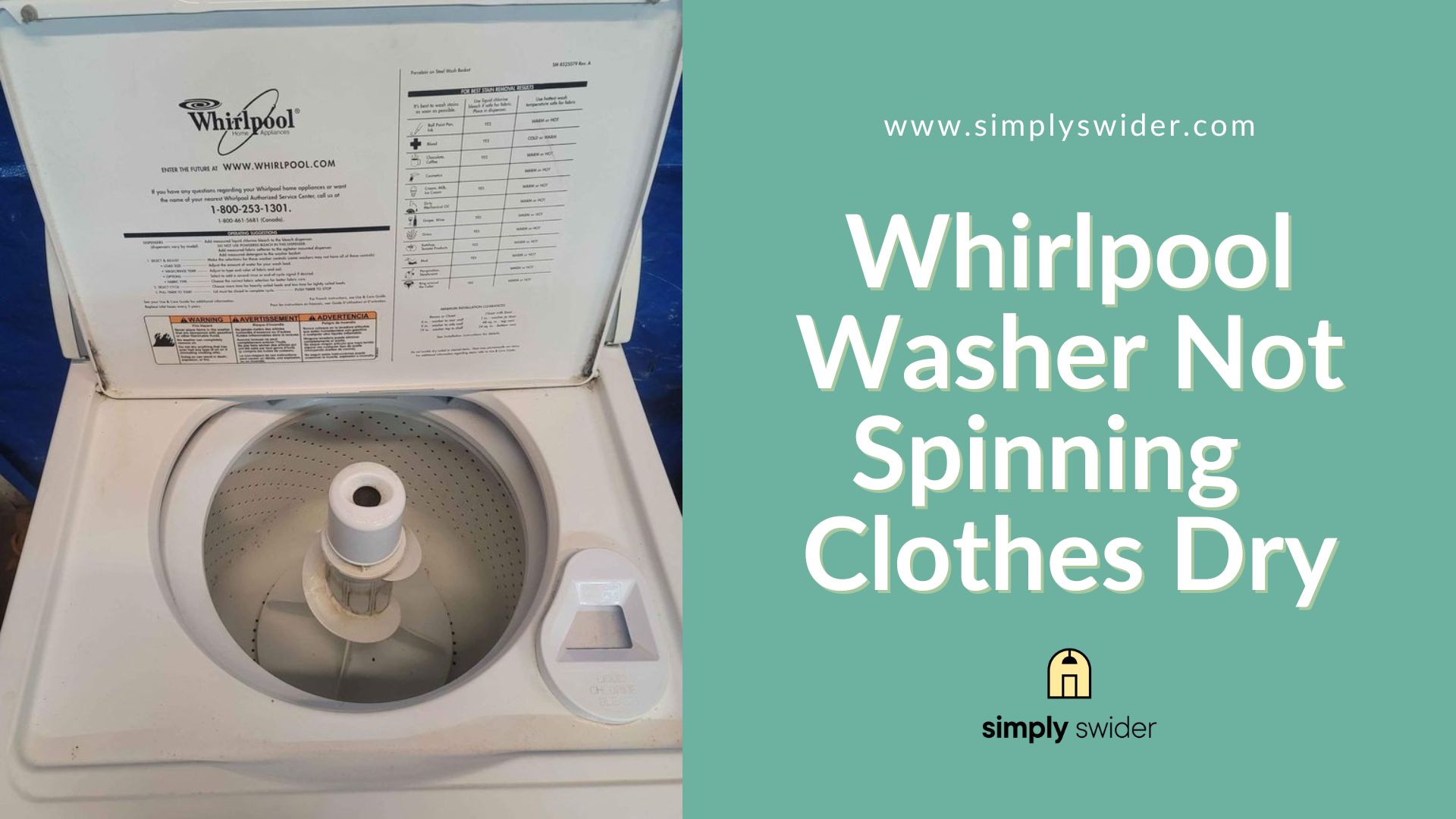Typically:
A wash cycle with your Whirlpool washer involves washing, rinsing, and spinning your clothes to remove excess water.
But:
You’ve recently discovered that your washing machine is not spinning, leaving your clothes drenched and unstately.
Well:
You could just toss your laundry into the dryer, right? Sorry to break it to you, but thoroughly wet clothes could cause eventual damage to your dryer.
So what do you do?
We have conducted detailed research to assist Whirlpool washer users like you, who may be having difficulty with their machines.
Here:
You will explore useful troubleshooting suggestions to try when your Whirlpool washer is not spinning your clothes dry.
Table of Contents
Whirlpool Washer Is Not Spinning Clothes Dry
If your Whirlpool washer leaves your clothes wet after a spin, there are a few remedies to try. You could check for a power failure, unclog the washer’s drainage system or replace defective parts. It would also help to ensure your washer is balanced and the wash load is evenly distributed.
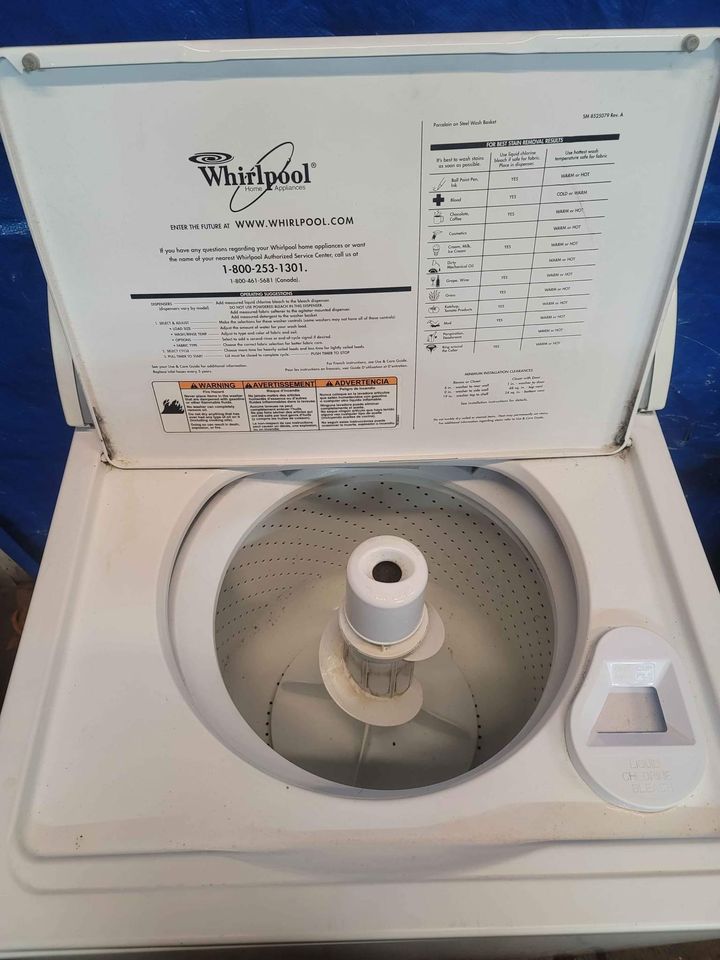
1. Check Your Electric Outlet for Low Voltage
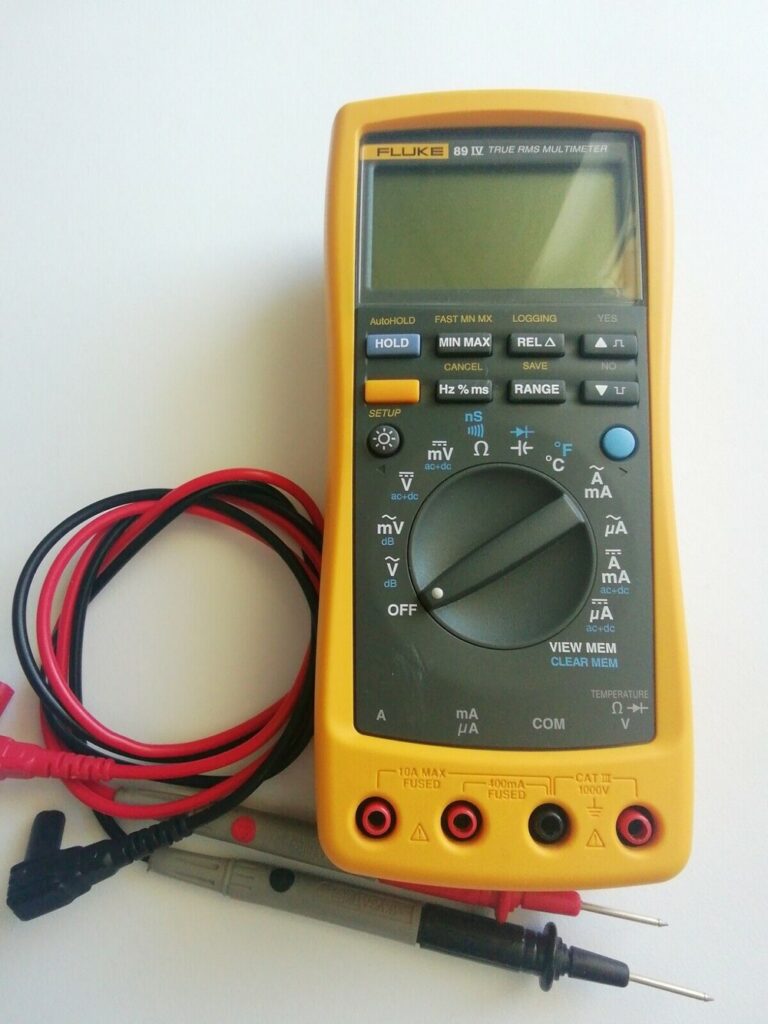
Get this:
Your Whirlpool washer will not have the adequate power needed to spin your clothes dry after a cycle if the electric outlet has a low voltage level.
Most washing machines require a 120V minimum for optimal functionality.
So:
Suppose your electric outlet does not match this requirement; you shouldn’t be surprised that your Whirlpool washer is not drying your clothes.
Here’s what to do:
Measure the voltage of your electric outlet with a multimeter; if it is below the standard, you should replace it immediately.
Consider calling a skilled electrician to replace or repair the electric outlet to avoid hazards if that is not your forte.
It is worth noting that:
Extension cords reduce the power transmission and limit the maximum power accessible to your Whirlpool washer.
Hence:
If you’d ordinarily connect your machine to an extension cord, try to avoid this and plug your washer directly into the wall socket instead.
After applying this fix:
Your Whirlpool washer should conveniently spin the excess water from your wash load after a cycle.
2. Ensure Your Load Is Balanced
Look:
If you don’t want complications with your Whirlpool washer, you must learn to be meticulous.
You’re usually lucky because you just stuff your laundry into the washer haphazardly and expect a hitchless wash cycle.
But today is not your lucky day, is it?
Your Whirlpool washer is likely not spinning your clothes dry because the wash load is unbalanced or overloaded.
You see:
If your clothes are arranged poorly in the washer, it could compromise the spinning, resulting in drenched clothes at the cycle’s end.
In addition:
Filling your wash drum with a bulky load could also affect your Whirlpool washer’s ability to dry your clothes.
To solve this problem:
Redistribute the laundry evenly in the wash drum, ensuring not to add too many clothes to the load.
Then:
Reset the spin cycle on your Whirlpool washer, which should work perfectly at this stage.
Also:
Stabilize a leaning Whirlpool washer as it could be the culprit of an imbalanced wash load.
Ensure it is placed on level ground to avoid hindrance to the spin cycle.
3. Repair and Unclog Your Whirlpool Washer’s Drainage
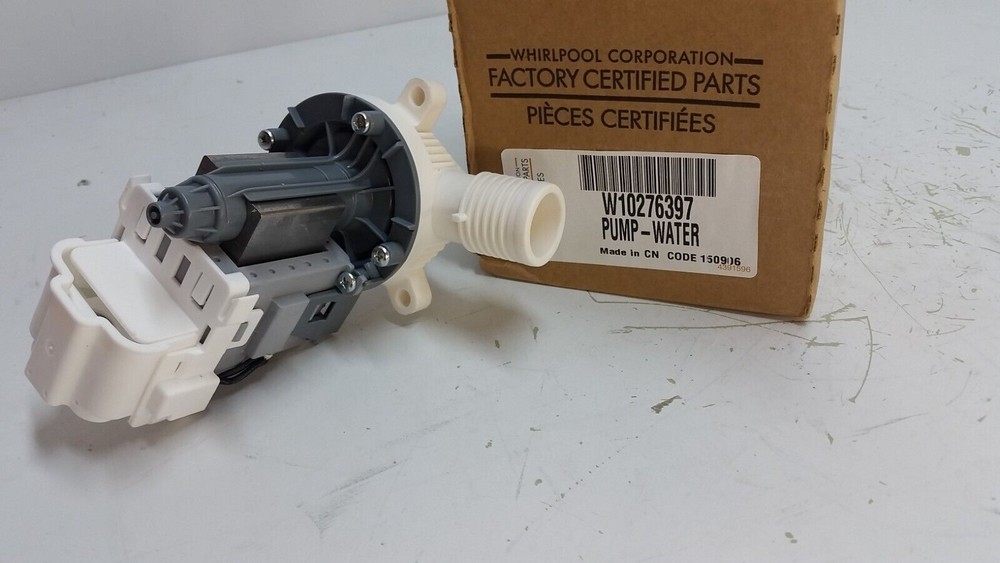
Here’s the thing:
A faulty drainage system will restrict your Whirlpool washer from spinning your clothes dry.
The drainage system comprises the drain hose, pump, and filter; when defective, water will not drain from the wash drum.
As such:
If any of these parts develop a malfunction, it would be in your best interest to get them checked as soon as possible.
What kind of faults could these parts possibly develop?
Well:
Whirlpool washers are equipped with a drain pump filter to collect debris and foreign objects that could potentially clog the pump.
This filter will eventually get clogged by the debris it collects, resulting in spinning issues.
Also:
The drain pump or hose could get clogged by sneaky debris bypassing the filter or become defective due to frequency of use and age.
Plus:
The drain hose could form kinks that obstruct water flow and cause tumbling issues.
Employ these suggestions to repair your Whirlpool washer’s drainage system:
- Step 1: Unclog the drain pump filter and hose manually by cleaning them thoroughly with a pressure washer drain cleaner.
- Step 2: Check for kinks and bends on the drain hose and straighten them by shifting your washer a few feet from the wall.
- Step 3: Reduce the drain hose length if it is too lengthy to avoid unnecessary kinking.
- Step 4: Check for distinct signs of damage or a clog in your pump; clear it out and replace it if defective.
Note:
Contact a reliable technician to assist with machine part replacements and avoid the risk of damage to your Whirlpool washer.
Of course:
You can also conveniently reach out to Whirlpool Customer Support for the aid you require.
4. Replace Your Washer’s Defective Drive Belt or Motor
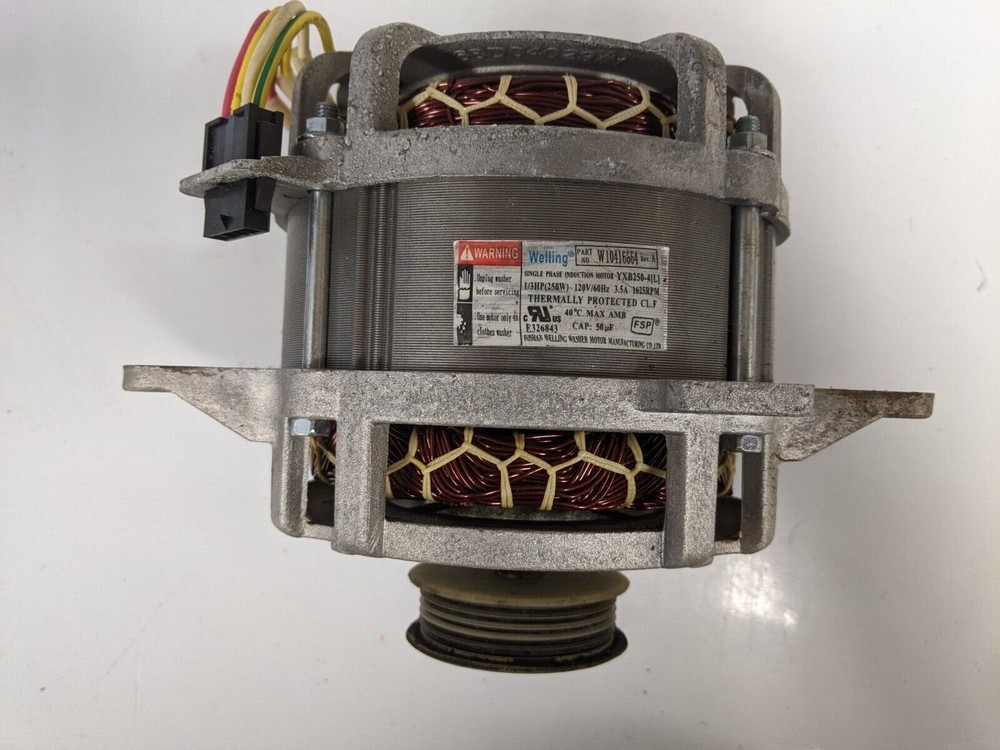
Unfortunately:
Your Whirlpool washer is probably not spinning due to a defective drive belt or motor. The drive belt could be stretched or worn, and the motor could be damaged.
You see:
Your Whirlpool washer will stop at the wash cycle if the drive belt or motor mechanics are faulty. The spin cycle will not start, and your washed laundry will remain wet and unspun in the drum.
Here’s what you need to do:
- Step 1: Disconnect your Whirlpool washer from the power source.
- Step 2: Remove the access panel.
- Step 3: Locate the drive pulley and detach the clamps holding the drive belt in place.
- Step 4: Inspect for wear, tears, and stretches, then replace the faulty drive belt.
To replace a damaged motor:
- Step 1: Test the motor’s continuity with a multimeter.
- Step 2: Remove and replace the drive motor if defective.
- Step 3: Reassemble your Whirlpool washer and run a test spin cycle.
Bear in mind:
It would be best to call a technician to help replace the drive belt or motor to avoid the risk of impairing your Whirlpool washer.
5. Use the Correct Setting for Your Wash Load
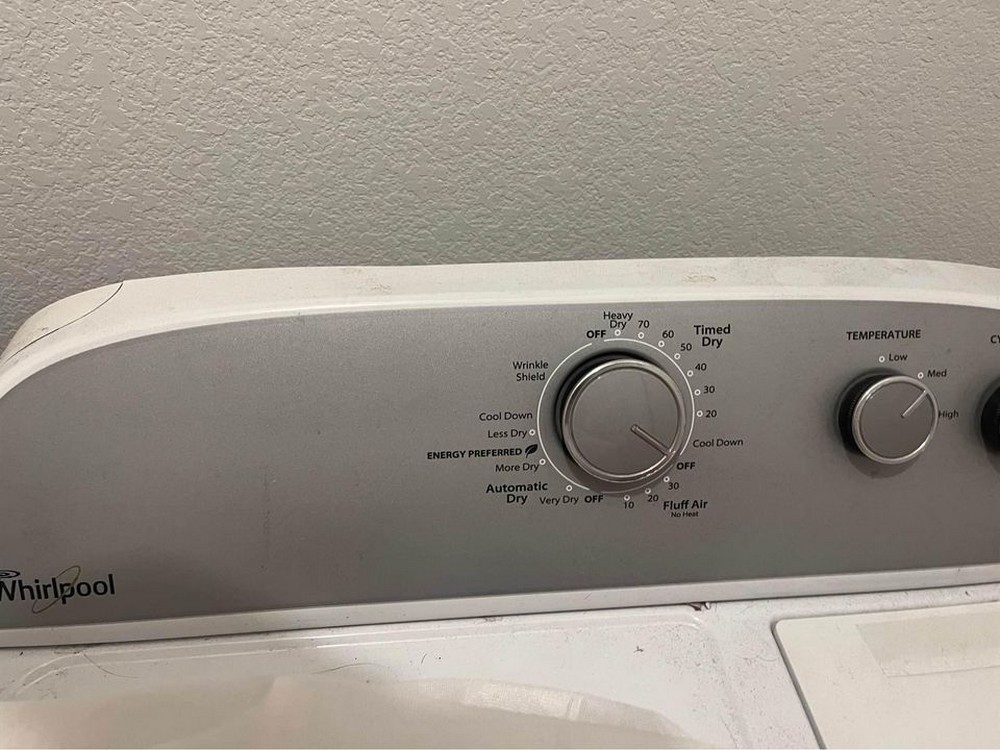
Finally:
If you use the wrong wash cycle setting for your load, your Whirlpool washer could have issues with spinning your clothes dry.
The thing is:
Whirpool washers have several cycle settings that give room for a customized wash experience.
These cycle settings feature a blend of temperature and speed to give your fabric the best care possible.
To that end:
You cannot expect your washer to spin bulky clothes when running delicate, hand-wash, or wool settings as they are spun relatively slower. Some washers may not even spin under these settings.
What do you do?
Ensure that you select the correct cycle settings for the type and bulk of your wash load.
Matching your Whirlpool washer’s settings with your laundry would help optimize utility.
Here is a guide:
Use the cotton, linen, or normal cycle settings for a regular wash load for steady high spin speeds.
Now:
Permanent press or casual cycle settings have average spin speeds and would also be great for an ordinary wash load.
Additionally:
Delicate, hand-wash, and wool settings are ideal for light wash loads and fragile fabrics; their spin speeds are significantly slower than others.
Lastly:
Bulky or heavy cycle settings are suitable for heavy loads and have a low spin speed compatible with the load.
You see:
Simply pairing your laundry with the appropriate wash cycle settings will save you the trouble of dealing with dripping wet and unspun laundry.
Models Most Affected
Although:
Some of the reasons your Whirlpool washer is not spinning your laundry dry are caused by user mistakes.
The other reasons could be wear and tear, poor maintenance, or simple machine failures.
Now:
These selected Whirlpool washer models are the most likely to develop malfunctions that lead to wet laundry after a spin.
1. Whirlpool Front Load Washer
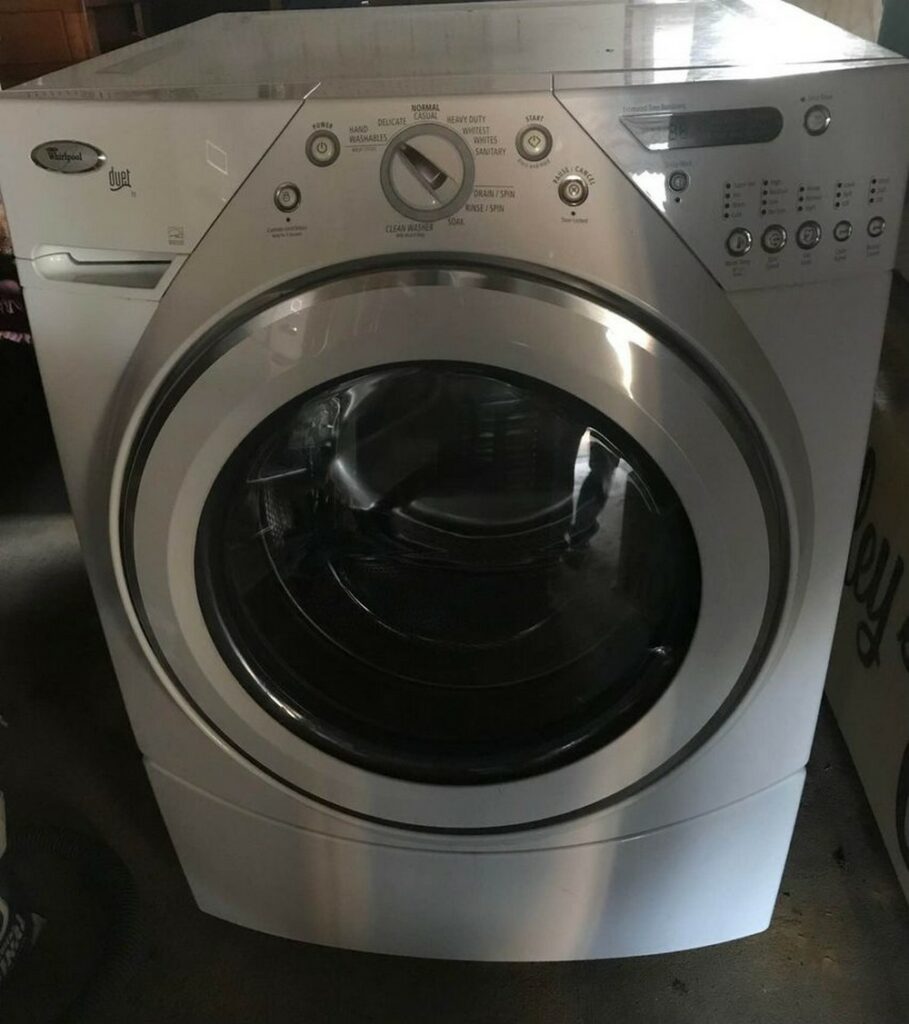
Fact:
Whirlpool front load washers, including the WFW9290, offer convenience, elegance, and efficiency.
The model series has features that tackle heavily soiled fabric and tumble clothes for up to 12 hours, keeping them crisp and wrinkle-free.
Unfortunately:
This tumble feature is susceptible to spinning malfunctions that you can troubleshoot easily with the nifty fixes above.
2. Whirlpool Top Load Washer
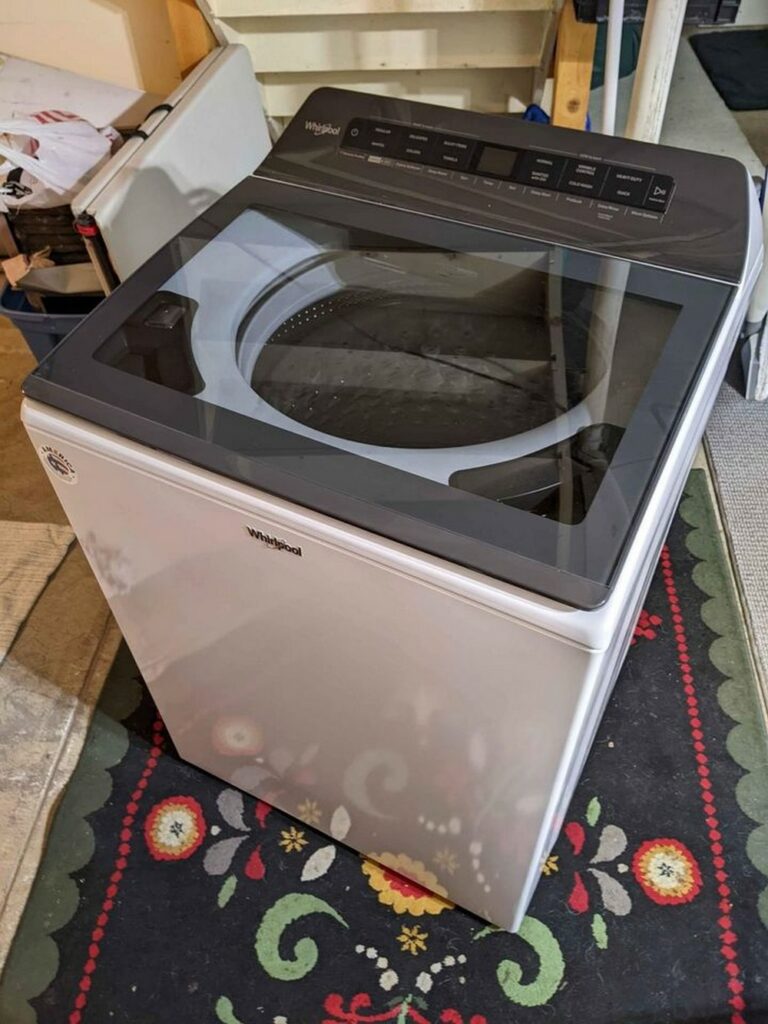
Here’s the thing:
Whirlpool top load washers, like the Whirlpool WTW5057LW and the Whirlpool WTW5000DW0, often come with customizable features such as a removable agitator.
The presoak option can also pretreat stains 30 minutes before the wash cycle.
But:
Whirlpool top load washers are not exempt from the malfunctions that cause washers to leave clothes wet after a cycle.
3. Whirlpool Cabrio
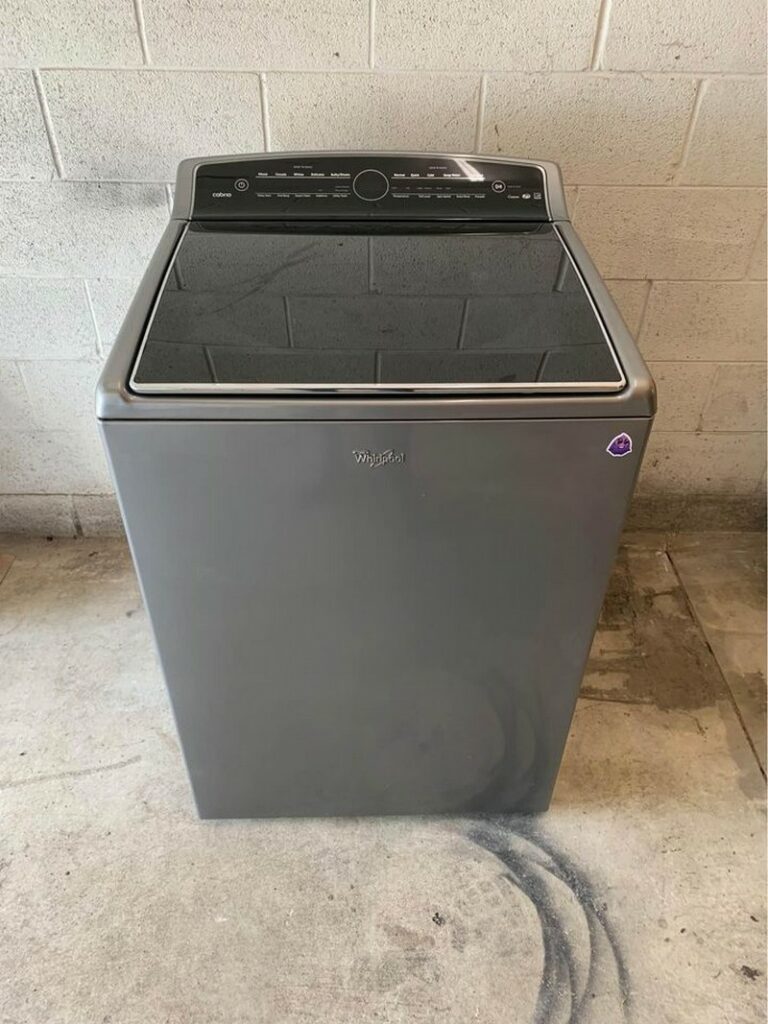
Get this:
The Whirlpool Cabrio is a high-efficiency top-loading washer featuring a ColorLast option with a perfect blend of functions designed to keep colors vibrant.
This washer has a large-capacity wash drum and an intuitive control panel for easy operation.
Sometimes:
This washer model develops faults for the reasons mentioned above, causing it to leave excessively wet clothes in the tub after a wash.
4. Whirlpool Duet
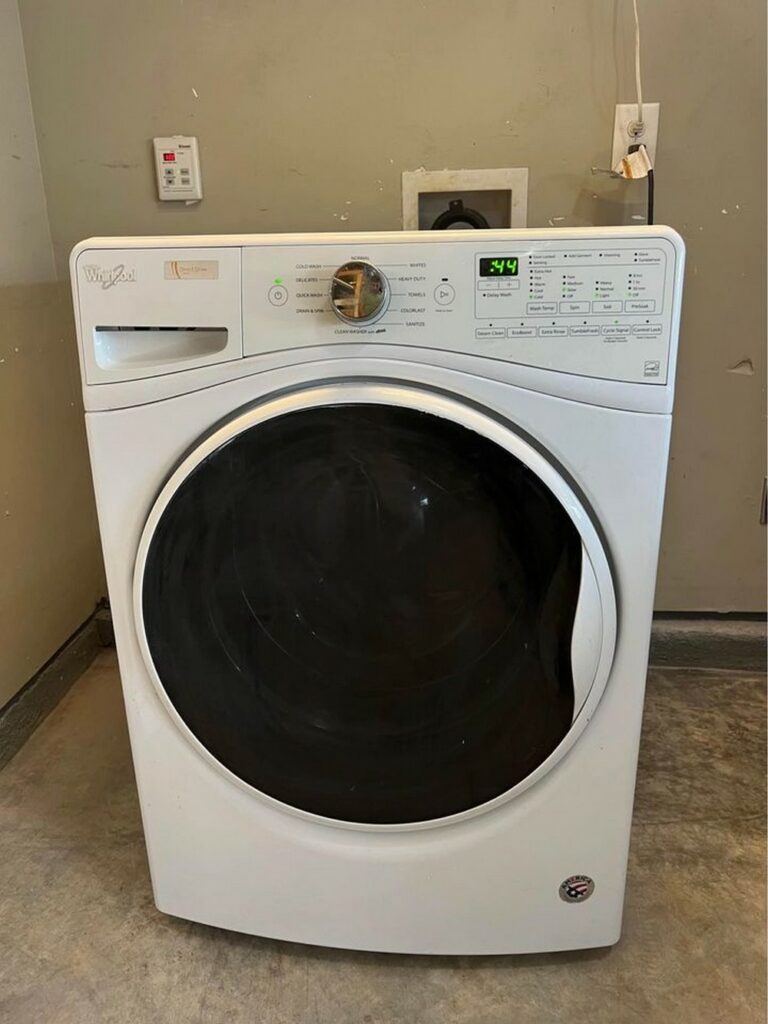
Look:
The Whirlpool Duet is a convenient and efficient front-loading washer with a smooth, large-capacity, stainless-steel wash drum.
It saves time with its Adaptive Wash technology and features the EcoBoost Option for energy conservation.
Despite this:
Users have complained that this Whirlpool model does not spin their laundry dry after a cycle. Fortunately, you can fix this problem with the helpful suggestions in this article.
Conclusion
It’s not news that:
Faulty washers are at the top of the list of unnecessary problems nobody wants to deal with.
Sorting dirty laundry is already stressful enough; adding a washer that leaves your clothes dripping wet makes your experience even worse.
We understand:
That’s why you must do something about it immediately.
On that account:
Here are the outlined fixes for your Whirlpool washer that won’t spin your clothes dry after a wash cycle.
- Check your electric outlet for low voltage
- Ensure your Whirlpool washer and the wash load are balanced
- Repair and unclog your Whirlpool washer’s drainage system
- Ensure you use the correct setting for your wash load
- Replace your Whirlpool washer’s defective drive belt or motor
You see:
Some of our suggested fixes are quite intuitive, and you can easily call a skilled technician to do the rest if that’s not your deal.
You also have the readily available option of contacting Whirlpool Customer support for more technical assistance and replacement parts.
All in all:
Please let us know if you found this article helpful or informative. Don’t forget to share your opinions, additions, and questions in the comment section below!
Frequently Asked Questions
Your washer may not be spinning your clothes dry for multiple reasons. It could be because of a power fault, unbalanced load, wrong cycle setting, clogged drainage system, or a defective drive belt or motor.
Your clothes might still be wet after the spin cycle because your washer could not spin properly or there is a drainage complication.
Avoid overloading your Whirlpool washer to prevent this unfortunate occurrence and ensure you repair the faulty drainage system.
It is likely a drainage issue if your Whirlpool washer doesn’t spin all the water out of your clothes. The drain pump, filter, or hose could be clogged or defective, among other reasons.
Twist the dial on your Whirlpool washer until the rinse, wash and stop lights are illuminated, then unplug your washer for about ten seconds.
Plugging it back in and turning it on should fully reset your washing machine’s spin cycle.
Users can find the drain pump filter at the bottom right of most top-loader Whirlpool washers. You can access it by pulling the handle of the dispenser drawer at the base.
If you discover that your washer’s drive belt has distinct damage, you should replace it as soon as possible. It should cost roughly $120 to $175 to replace a washing machine drive belt.
Whirlpool washers are equipped with a drain pump filter to prevent debris and foreign objects from passing through the pump. This filter certainly needs to be unclogged regularly to prevent spinning complications.

